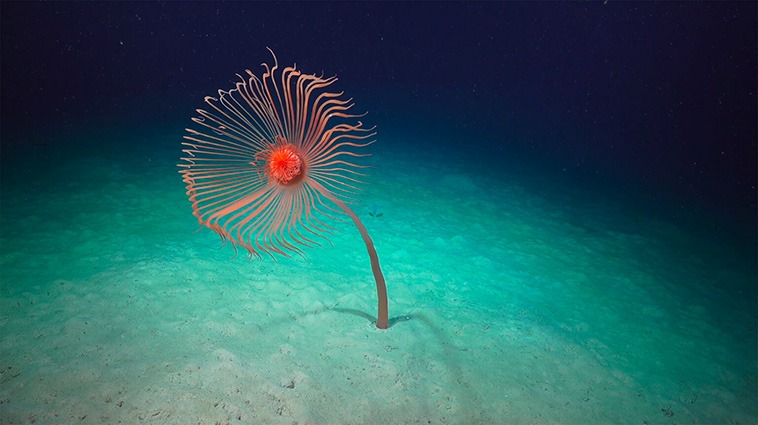ANIMALS
Photographer Takes Pictures of an Amazing Creature Cunningly Concealed in the Sand

When someone calls themselves an animal lover, it means they like wildlife in general, but not all species, especially reptiles and amphibians. When it comes to snakes, people often think of their scary eyes, long tongue, and venomous fangs. Residents in some regions even see this creature as a symbol of evil and poison.
In fact, the snake is an elusive animal with incredible abilities that help them survive under harsh environmental conditions. That’s why it represents rebirth, transformation, and immortality in many cultures. The serpent has been associated with some of the oldest rituals known to mankind. If you look at this creature closer, you’ll realize how stunning it is!
One of their amazing skills to avoid enemies and protect themselves is the ability to blend in with the surroundings. Let’s meet the Peringuey’s adder, one of the smallest vipers in the world to see how well it adapts to the desert where it lives!
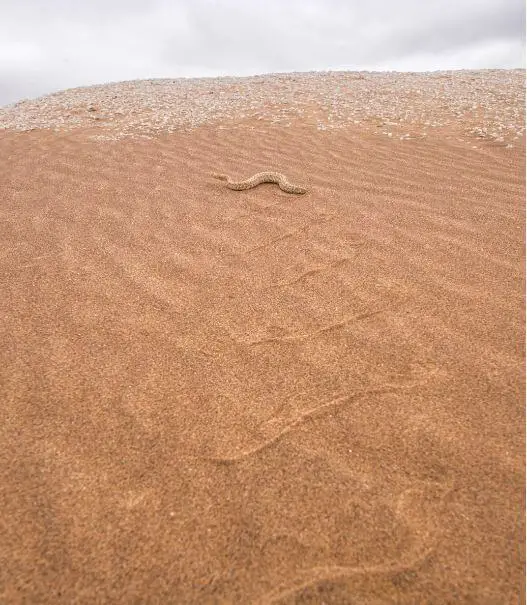 Source: MARISA ISHIMATSU
Source: MARISA ISHIMATSU
Marisa Ishimatsu, a Japanese photographer and herpetologist, travels around the world during her vacations to catch beautiful moments of reptiles and amphibians. Lately, she went to Nambia with her herpetologist photographer friends to find the six species of vipers, including the Peringuey’s adder.
Living in desert, this viper species buries itself under the sand. The photographers had to hire the tour agency The Naturalist Collection and went to the destination with their guide Dayne Braine.
“As the sand is so soft, you can often see tracks showing where the snakes have traversed from one bush to another overnight,” Ishimatsu explained. “If you’re very good at tracking (like Dayne is), you can follow the tracks and find the snake at the end of them. It sounds simple, but the sands move so much that the tracks are blown away soon after they’re made.”
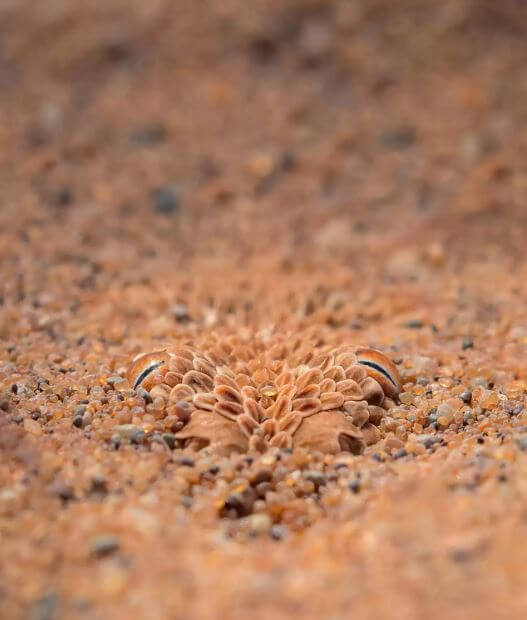 Source: MARISA ISHIMATSU
Source: MARISA ISHIMATSU
Ishimatsu and her team tried their best to photograph the reptiles without scaring them or placing strain on them. With the help of an experienced tour guide, they managed to track the snakes and catch several stunning pics. One of the photos astounded everyone with the beauty of a sneaky Peringuey’s adder.
“This has been my most successful photo to date,” Ishimatsu shared. “I’ve been a photographer for over 10 years, largely of reptiles and amphibians. I have photographed hundreds of snakes from all over the world … There’s something about this shot that inspires a strong reaction. I think it’s like one of those Magic Eye puzzles — it takes a minute for you to see the snake’s eyes, and then when you do see them, it’s startling to realize it’s staring right at you.”
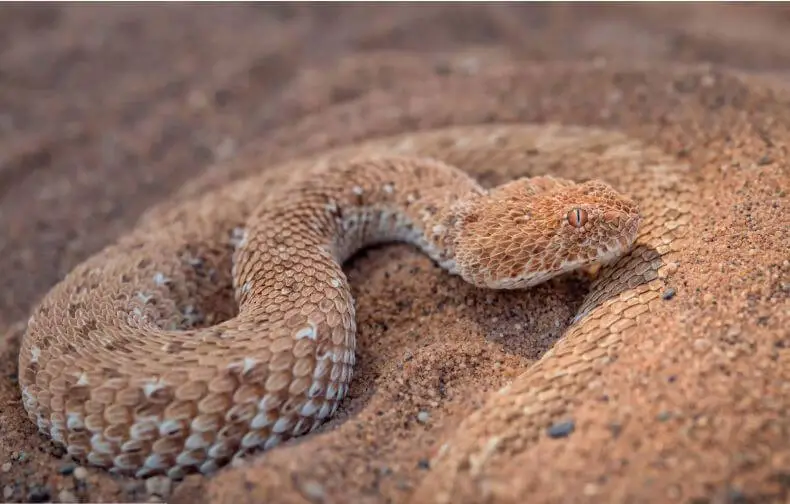 Source: MARISA ISHIMATSU
Source: MARISA ISHIMATSU
You may feel confused when looking at the photo for the first time. It’s not easy to figure out what appears in the image. However, once you spot the viper, you can’t take your eyes off him.
The group ensured the creature was fine after they’d done their job. They finally caught pictures of all six of the snakes they planned to find, but the pics of the Peringuey’s adder were the best.
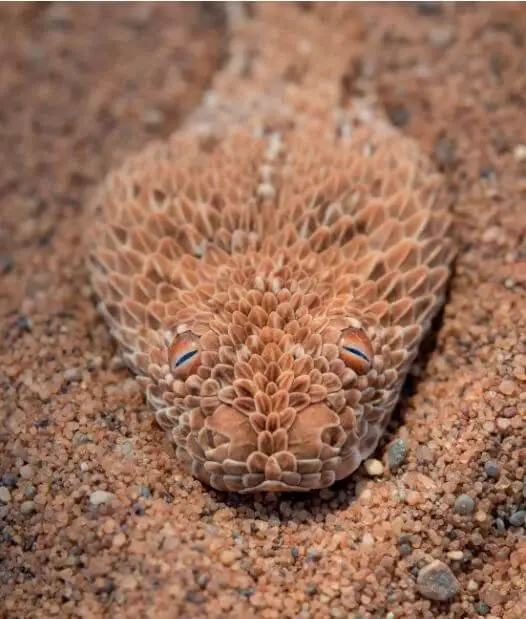 Source: MARISA ISHIMATSU
Source: MARISA ISHIMATSU
Ishimatsu hopes people can see the charm and wonder of snakes in her photos. “I hope that this photo helps people appreciate how special snakes are,” Ishimatsu said. “Peringuey’s adders are perfectly adapted to their environment, and they, like all snakes, are worth protecting. I hope people can see the beauty in snakes, even if they find them frightening. With a little respect and understanding, we can coexist.”
What do you think of this viper? What’s your impression of snakes in general? Let us know your thoughts in the comment segment below, and don’t forget to hit the subscribe button to get more fascinating photos and ideas from us!
ANIMALS
Amazing Video of Unseen Ocean Creatures in the Ningaloo Canyons

The Schmidt Ocean Institute recently explored the Ningaloo Canyons on the western coast of Australia using a robotic underwater vehicle called the ROV Sebastian. Check out the amazing video of what they discovered in the deep parts of the Indian Ocean.
More info: Youtube
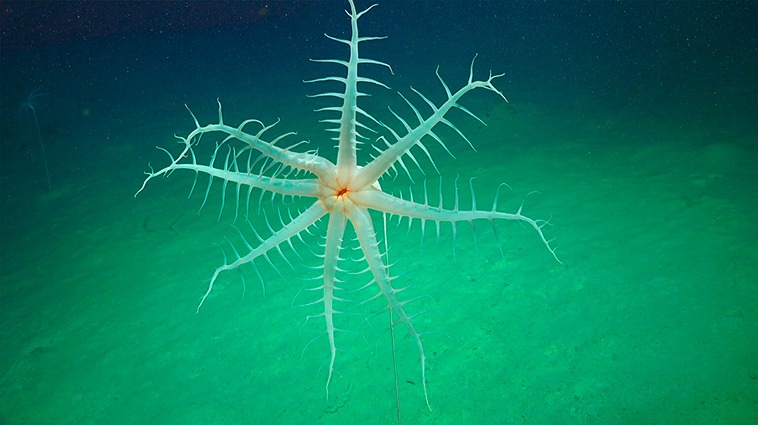
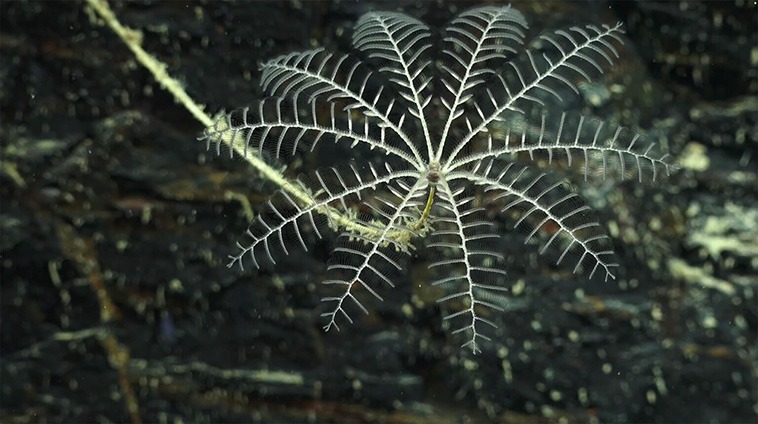


ANIMALS
These Pics Are Art and the Artists Are Insects

Flying insects move so quickly that they are hard to follow, but new technology and some smart ideas have helped Spanish photographer Xavi Bou do just that. After spending 10 years focusing on birds in flight for his Ornithographies project, he turned his attention to insects.
For Entomographies, he uses high-speed video footage taken by Adrian Smith, an insect expert at North Carolina State University, to study and record how insects move. Bou then picks multiple frames and combines them into single images that show the fast movements of one or more insects through space and time.
With Smith’s help, Bou has captured the aerial tricks of wasps, the jumps of leafhoppers, and the fluttering of butterflies in amazing detail. He hopes that by doing this, he can make people more aware of the decline in important insect populations around the world.
1. Zebra longwing
This butterfly, which is common in many areas of the Americas, really fits its name. It can fly very high with just a few flaps of its large wings.
 Image source: nationalgeographic
Image source: nationalgeographic
2. Two-lined spittlebug
This insect, which comes from the eastern United States, is often seen as a pest because it likes to eat grass. Its springy back legs can make it jump into the air like a rocket.
 Image source: nationalgeographic
Image source: nationalgeographic
3. Yellow-collared scape moth
Unlike most moths, this North American species flies during the day. Its shiny blue-black wings sparkle in the sunlight.
 Image source: nationalgeographic
Image source: nationalgeographic
4. Ailanthus webworm moths
These tropical moths have spread farther north in the U.S. Because of their larval host, the invasive tree of heaven, they are now one of the most common backyard moths in the country.
 Image source: nationalgeographic
Image source: nationalgeographic
5. Common stonefly
Mostly found in eastern North America, this insect starts its life as an underwater nymph in forested streams or rivers. Then it leaves the water, sheds its skin, and becomes an adult with wings.
 Image source: nationalgeographic
Image source: nationalgeographic
6. Green lacewings
Eighty-seven species of this insect have been found in the U.S. and Canada. Since they eat a lot of unwanted plant pests like aphids and mites, they are often used to naturally control these pests.
 Image source: nationalgeographic
Image source: nationalgeographic
7. Grapevine beetle
This insect, fittingly named, eats the leaves and fruit of grapevines, both wild and farmed, but it doesn’t do much damage to the plants. As a type of scarab beetle, it often flies in a curved path.
 Image source: nationalgeographic
Image source: nationalgeographic
8. Oak treehopper and green treehopper
Treehoppers are known for their uniquely shaped pronotum, the part behind their head, which often looks like plant parts to hide from predators. They can jump well thanks to special muscles.
 Image source: nationalgeographic
Image source: nationalgeographic
9. Banded orange
This brightly colored butterfly can be found from Mexico to Brazil. Before mating season, male butterflies look for mineral salts, sometimes even drinking salty fluids from the skin, eyes, and nostrils of other animals.
 Image source: nationalgeographic
Image source: nationalgeographic
10. Sapho longwing
Longwings can live for 6 to 7 months, longer than most butterflies. This type, found from Mexico to Ecuador, has shiny blue wings, which is why it’s also called the Sapphire longwing.
 Image source: nationalgeographic
Image source: nationalgeographic
ANIMALS
Eagle and Fox in an Epic Midair Battle Over a Rabbit, Were Captured by a Photographer

Wildlife photography often depends on the perfect combination of good timing and the right place.
That’s exactly what happened when Kevin Ebi, an experienced wildlife photographer, captured an incredible battle between a bald eagle and a red fox, both competing for a rabbit meal.
In a detailed blog post, Ebi shares the fascinating series of events that unfolded while he was photographing foxes in San Juan Island National Historical Park, located in Washington state.
Ebi noticed a lively group of eight fox kits as they began their hunting lessons. Suddenly, they spotted a rabbit, and a thrilling chase ensued. Eventually, one of the foxes emerged as the winner, proudly carrying the rabbit across the field.
 Image source: Kevin Ebi
Image source: Kevin Ebi
Ebi shares what happened at that moment: “As I followed the fox with my camera, a sudden bald eagle cry caught my attention. It was swiftly approaching, clearly aiming for the rabbit. I quickly focused on the fox, anticipating a quick turnover of events.”
To Ebi’s astonishment, instead of a quick surrender, the situation turned into a intense fight in the air.
The eagle used its power to lift the fox and rabbit high up in the sky. Even while airborne, the fox attempted to break free by swinging back and forth.
 Image source: Kevin Ebi
Image source: Kevin Ebi
 Image source: Kevin Ebi
Image source: Kevin Ebi
 Image source: Kevin Ebi
Image source: Kevin Ebi
In the end, the eagle moved the rabbit to its other claw, causing the fox to let go. The intense battle came to an end in less than 10 seconds.
 Image source: Kevin Ebi
Image source: Kevin Ebi
For those worried about the fox’s well-being after the fight, Ebi reassures that it was not injured. The fox swiftly bounced back from the encounter and resumed its playful behavior with the other young foxes, showing no visible wounds from the aerial clash.
 Image source: Kevin Ebi
Image source: Kevin Ebi
 Image source: Kevin Ebi
Image source: Kevin Ebi
 Image source: Kevin Ebi
Image source: Kevin Ebi
 Image source: Kevin Ebi
Image source: Kevin Ebi
-

 GARDEN12 tháng ago
GARDEN12 tháng ago4 Easiest Ways to Get Free Plants
-

 GARDEN9 tháng ago
GARDEN9 tháng ago15 Houseplants That Grow Well in Vases with Water
-

 FUNNY12 tháng ago
FUNNY12 tháng ago30 Weirdest Things That People Came Across On The Subway
-

 FUNNY12 tháng ago
FUNNY12 tháng ago30 Funny and Perplexing Photos That Make You Laugh All Day
-

 DIY & CRAFT11 tháng ago
DIY & CRAFT11 tháng ago19 Easy and Creative DIY Ideas to Enhance Front Yard
-

 ANIMALS12 tháng ago
ANIMALS12 tháng agoBritish Angler Caught Huge 67-Pound Goldfish in the World
-

 GARDEN10 tháng ago
GARDEN10 tháng ago30 Shimmering Side Yard Landscape Ideas
-

 FUNNY12 tháng ago
FUNNY12 tháng ago22 Design Fails That Will Make You Laugh Out Loud

